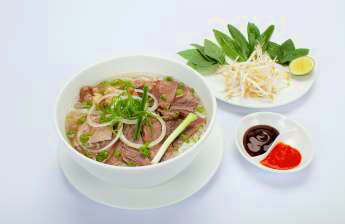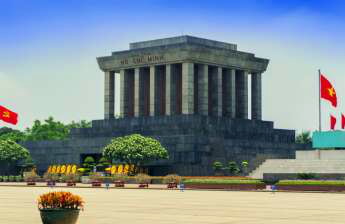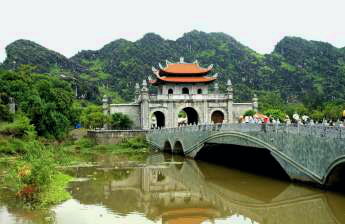Hoan Kiem Lake is an iconic site that attracts a lot of visitors from all over the world. It’s a place where you can get away from the hustle and bustle of the city and enjoy some peace and quiet.
Besides the stunning scenery, the lake is also known for its legends. The story says that a long time ago, a King Le Loi was on a boat on the lake when a giant turtle appeared to him and said that he had brought him a sword.
1. The Huc Bridge
One of the most famous icons of Hanoi is the Huc Bridge, which translates as “the place where morning sunlight rests”. The bridge connects Hoan Kiem Lake to the small island on which Ngoc Son Temple stands.
This iconic architectural wonder was originally constructed during the 18th century. It is a beautiful wooden bridge crafted in the traditional Vietnamese style and features a gorgeous red color that contrasts with the green water of Hoan Kiem Lake.
The story behind the bridge dates back to when Vietnam first gained independence from France. According to legend, Le Loi was boating on the lake when he saw a Golden Turtle God. This led to him returning Heaven’s Will and renaming the lake Hoan Kiem Lake.
2. Ngoc Son Temple
The quaint Ngoc Son Temple or 'Jade Mountain Temple', sits on a tiny island at the northern end of Hoan Kiem Lake. It is a famous cultural and spiritual symbol of Hanoi.
It is dedicated to war hero General Tran Hung Dao, who fought against the Chinese and Mongolian invaders in the 13th century. There are also other statues in honor of Van Xuong, the God of Literature; and La To, a patron saint of physicians.
Upon entering Ngoc Son Temple, visitors pass through the first gate decorated with the Taoist symbols of yin and yang -- a dragon and a tiger, representing male and female energy, power and wisdom. The second gate has panels of swimming koi carp gazing at the moon’s reflection near a pine tree with roosting white cranes. These images symbolize longevity.
3. St. Joseph’s Cathedral
If you’re planning a trip to Hanoi, then there’s no better place to begin than the iconic St. Joseph’s Cathedral, a Neo-Gothic church that was built by the French colonial government in 1886.
Like a miniature simulation of Notre Dame de Paris, this cathedral features a soaring facade and twin bell towers. Its interior is equally impressive with a high vaulted ceiling, original stained glass windows, and elaborate altars.
As you can imagine, the cathedral is a popular spot for tourists and locals alike. There are a number of sightseeing tours that include a visit to this famous landmark.
4. Hoa Lo Prison
Originally built in the 1880s, Hoa Lo Prison was used to incarcerate Vietnamese political prisoners. It became a symbol of French colonial oppression, and when the French were defeated in 1954 it was repurposed into a prison for North Vietnamese prisoners.
The museum was created to commemorate the prison’s history. There are a few displays of American POWs (though you can’t see them), but most of the museum focuses on the harrowing conditions Vietnamese revolutionaries faced while in prison under French rule.
Visitors can see the Middle-age guillotine used to execute inmates, a tropical almond tree where prisoners gathered the fruit for medicine and artifacts from inside the prison. In one room, you can even see Senator John McCain’s parachute and flight suit from when he was shot down in 1967.
5. Thang Long Water Puppet Theater
Thang Long Water Puppet Theater is a must-see for visitors to Hanoi, especially those who love watching live performances of traditional Vietnamese culture. Located on 57B Dinh Tien Hoang Street near Hoan Kiem Lake, it has been an important cultural center since 1969.
Water puppetry is a traditional art form that dates back to 1,000 years ago during the Ly Dynasty. Originally performed in flooded rice paddies, the shows are now held in pools of water, with musicians playing cheo (a form of opera originating from north Vietnam) and singers interpreting stories through song and instrumental music.
The artists behind a split-bamboo screen control the puppets using long bamboo rods that are hidden beneath waist deep water. They may yell a word of encouragement to the puppets or warn them of danger, depending on the story being told.



